1. Stephen C, Bayne MS, Harald O, Heymann HO, Edward J, Swift JR. Update on dental composite restorations. J Am Dent Assoc. 125:687–701. 1994.
2. Mills RW, Jandt KD. Blue LEDs for curing polymer-based dental filling materials. LEOS Newsletter. 12:9–10. 1998.
3. Shintani H, Inoue T, Yamaki M. Analysis of cam-phorquinone in visible light cured composite resins. Dent Mat. 1:14–126. 1985.
4. Peutzfeldt A, Asmussen E. Hardness of restorative resins: effect of camphorquinone, amine, and inhibitor. ACTA Odontol Scand. 47:229–231. 1989.

5. Fan PL, Wozniak WT, Reyes WD, Stanford JW. Irradiance of visible light-curing units and voltage variation effects. J Am Dent Assoc. 115:442–445. 1987.

6. Rueggeberg FA, Caughman WF. Factors affecting light transmission of single-use, plastic light-curing tips. Oper Dent. 23:179–184. 1998.
7. Pouls JG, Styner DL. Curing lights: Changes in intensity output with use over time. General Dent January-February. 70–73. 1997.
8. Pilo R, Oelgiesser D, Cardash HS. A survey of intensity and potential for depth of cure among light-curing units in clinical use. J Dent. 27:235–241. 1999.
9. Peutzfeldt A, Sahafi A, Asmussen E. Characterization of resin composites polymerized with plasma arc curing units. Dent Mater. 19:330–336. 2000.

10. Munksgaard EC, Peutzfeldt A, Asmussen E. Elution of TEGDMA and BisGMA from a resin and a resin composite cured with halogen or plasma light. Eur J Oral Sci. 108:341–345. 2000.

11. Clinical research associates newsletter volume 23, Issue 5-6. May-June 1999.
12. Pearson GJ, Longman CM. Water sorption and solubility of resin-based materials following inadequate polymerization by a visible-light curing system. J Oral Rehabil. 16:57–61. 1989.

13. Eakle WS. Fracture resistance of teeth restored with class II bonded composite resin. J Dent Res. 65:149–153. 1986.

14. Youngson CC, Glyn Jhones JC, Fox K, Smith IS, Wood DJ, Gale M. A fluid filtration and clearing techneque to assess microleakage associated with three dentine bonding systems. J Dent. 27:223–233. 1999.
15. Tsunekawa M, Setcos JC, USA mi Y, Iwaku M, Marshall SJ. A new light-activated adhesive composite: shear bond strength and microleakage. Dent Mater. 8:234–237. 1992.

16. Rueggeberg FA, Caughman WF, Curtis JW. Effect of light intensity and exposure duration on cure of resin composites. Oper Dent. 19:26–32. 1994.
17. Pires JAF, Cvitko E, Denehy G, Swift EJ Jr. Effect of curing tip distance on light intersity and composite resin microhardness. Quintessence int. 24:517–521. 1993.
18. Davidson-Kaban SS, Davidson CL, Feilzer AJ, Gee AJ, Erdilek N. The effect of curing light variations on bulk curing and wall-to-wall quality of two types and various shades of resin composites. Dent Mater. 13:344–52. 1997.

19. Vargas MA, Cobb DS, Schmit JL. Polymerization of composite resins: Argon laser vs conventional light. Oper Dent. 23:87–93. 1998.
20. Vankerckhoven H, Lambrechts P, Vanbeylen M, Davidson CL, Vanherle G. Unreated methacrylate groups on the surfaces of composite resins. J Dent Res. 61:791–796. 1982.
21. Tanoue N, Matsumura H, Atsuta M. Curing depth of prosthetic composite materials polymerized with their proprietary photo-curing units. J Oral Rehabil. 26:594–599. 1999.

22. Kawaguchi M, Fukushima T, Miyazaki M. The relationship between cure depth and transmission coeffe-cient of visible-light-activated resin composites. J Dent Res. 73:516–521. 1994.
23. Wassell RW, McCabe JF, Walls AW. Subsurface deformation associated with hardness measurements of composites. Dent Mater. 8:218–223. 1992.

24. Pilo R, Cardash HS. Post-irradition polymerization of different anterior and posterior visible light-activated resin composites. Dent Mater. 8:299–304. 1992.
25. Chung KH, Greener EH. Correlation between degree of conversion, filler concentration and mechanical properities of posterior composite resins. J Oral Rehabil. 17:487–494. 1990.
26. Harrington E, Wilson HJ. Depth of cure of radiation-activated materials: Effect of mould material and cavity size. J Dent. 21:305–311. 1993.
27. Jandt KD, Mills RW, Flackwell GB, Ashworth SH. Depth of cure and compressive strength of dental composites cured with blue light emitting diodes(LEDs). Dent Mater. 16:41–47. 2000.
28. Yap AUJ, Seneviratne C. Influence of light energy density effectiveness of composite cure. Oper Dent. 26:460–466. 2001.
29. Lloyd CH, Scrimgeour SN, Chudek JA, Mackay RL, Hunter G, Pananalkis D, Abel EW. Determination of the depth of cure for VLC composites by nuclear magnetic restoration microimaging. Dent Mater. 10:128–133. 1994.
30. Ferracane JL, Aday P, Matsumoto H, Marker VA. Relationship between shade and depth of cure for light-activated dental composite resins. Dent Mater. 2:80–84. 1986.

31. Shortall AC, Wilson HJ, Harrington E. Depth of cure of radiation-activated composite restoratives-influence of shade and opacity. J Oral Rehabil. 22:337–342. 1995.
32. Warren K. An investigation into the microhardness of a light cured composite when cured through varying thicknesses of porcelain. J Oral Rehabil. 17:327–334. 1990.

33. Sharkey S, Ray N, Burke F, Ziada H, Hannigan A. Surface hardness of light-activated resin composites cured by two different visible-light sources: An in vitro study. Quintessence int. 32:401–405. 2001.
34. Kurachi C, Tuboy AM, Magalhaes DV, Bagnato VS. Hardness evaluation a dental composite polymerize with experimental LED-based devices. Dent Mater. 17:309–315. 2001.




 PDF
PDF ePub
ePub Citation
Citation Print
Print


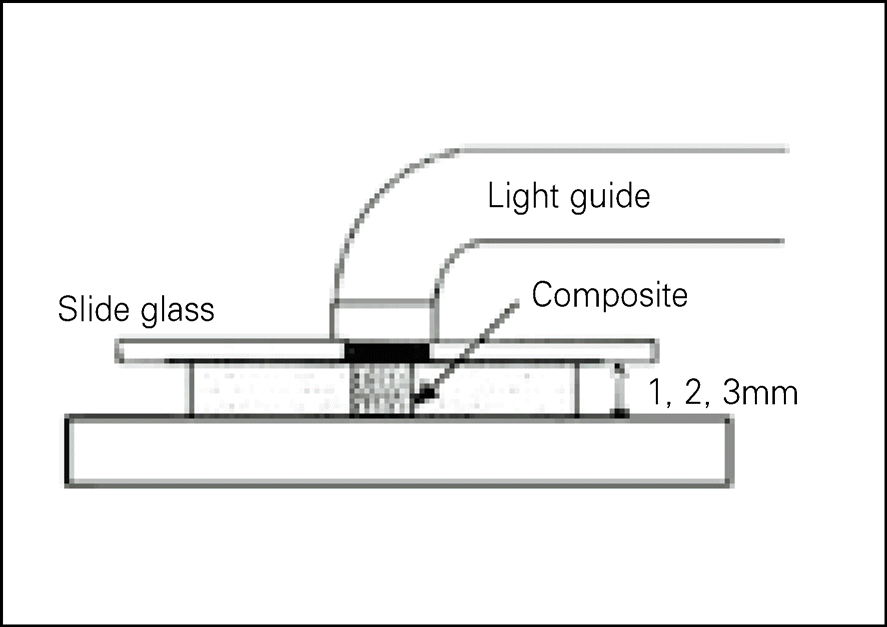
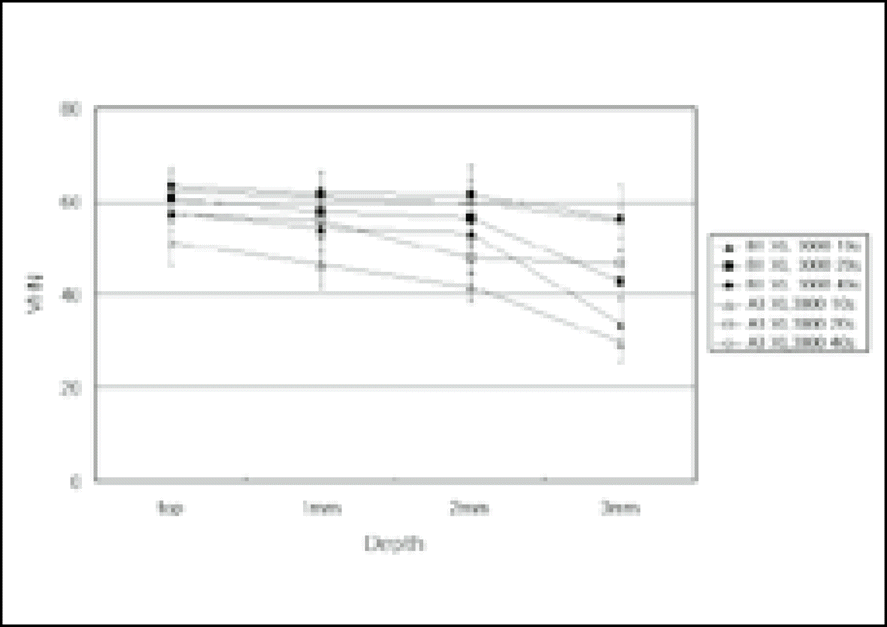
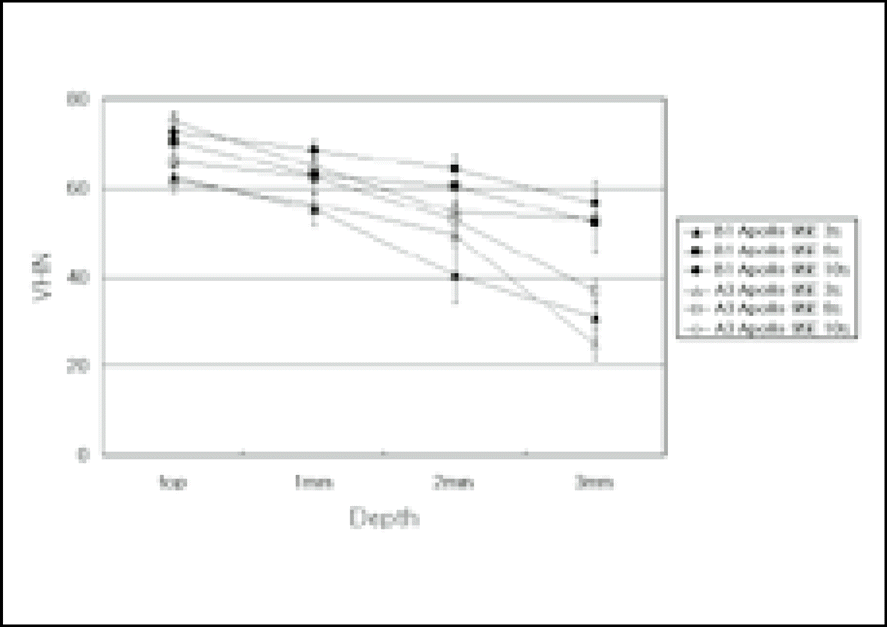
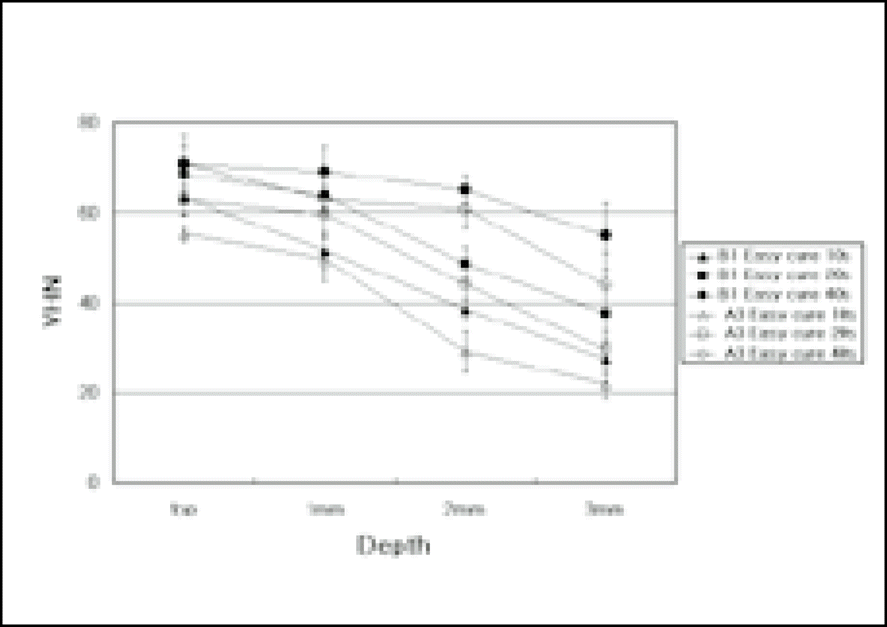
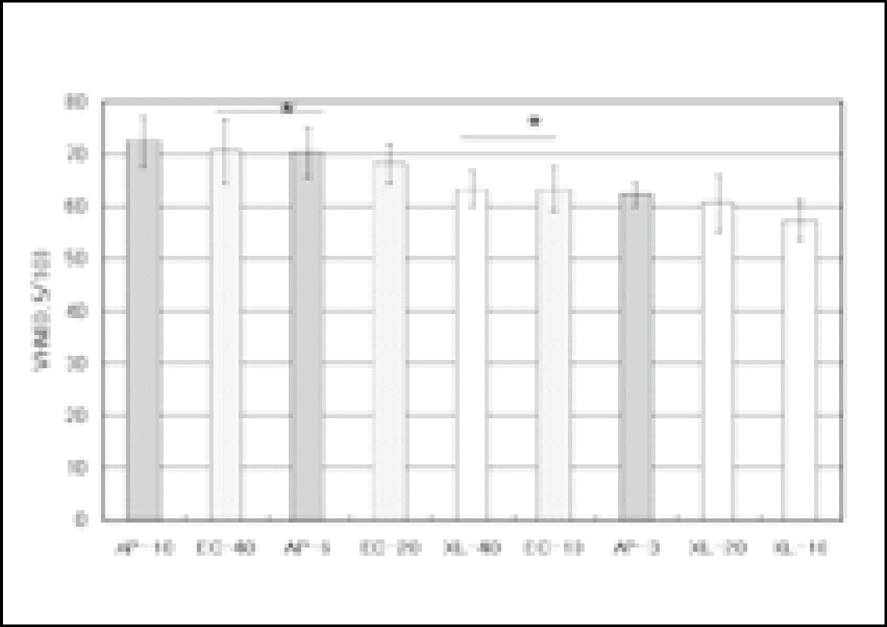

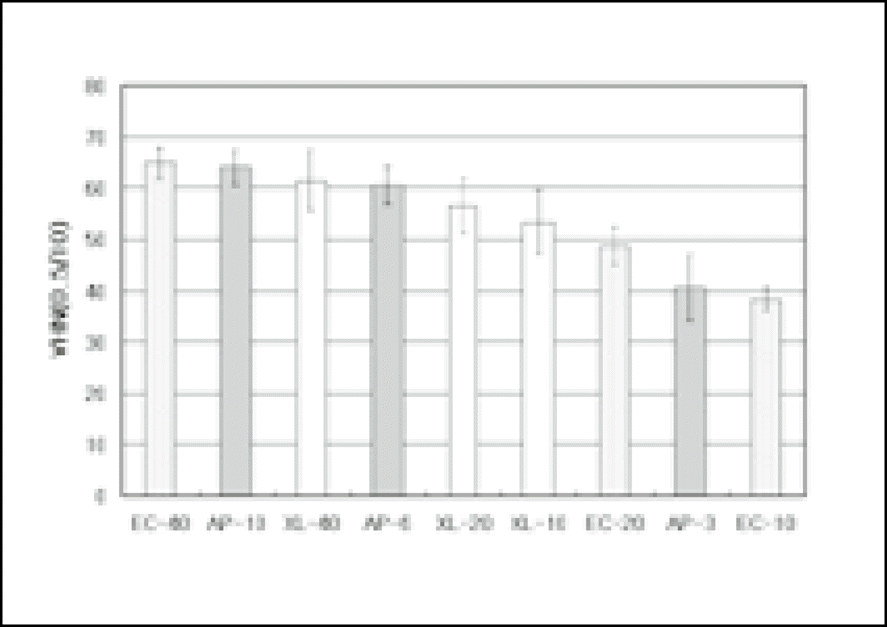
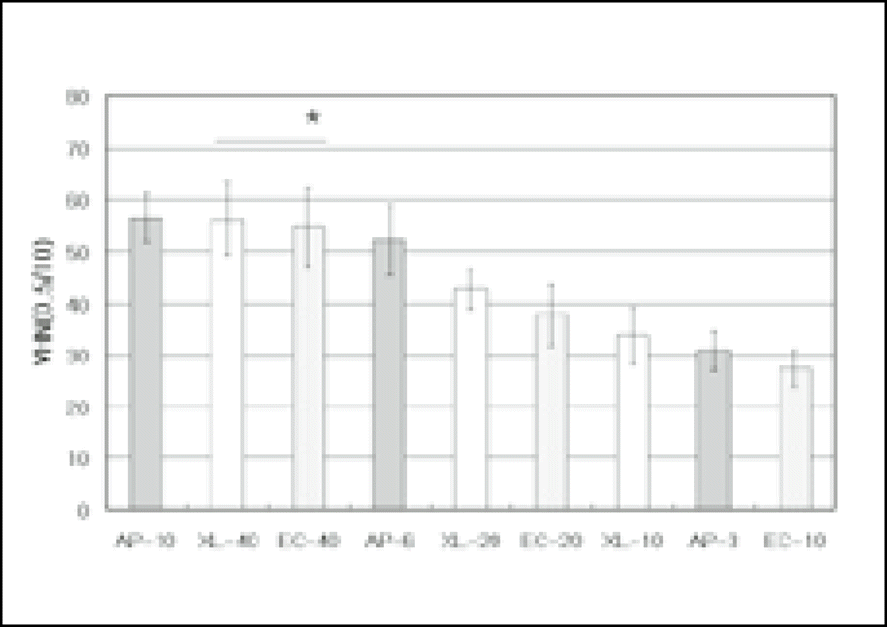
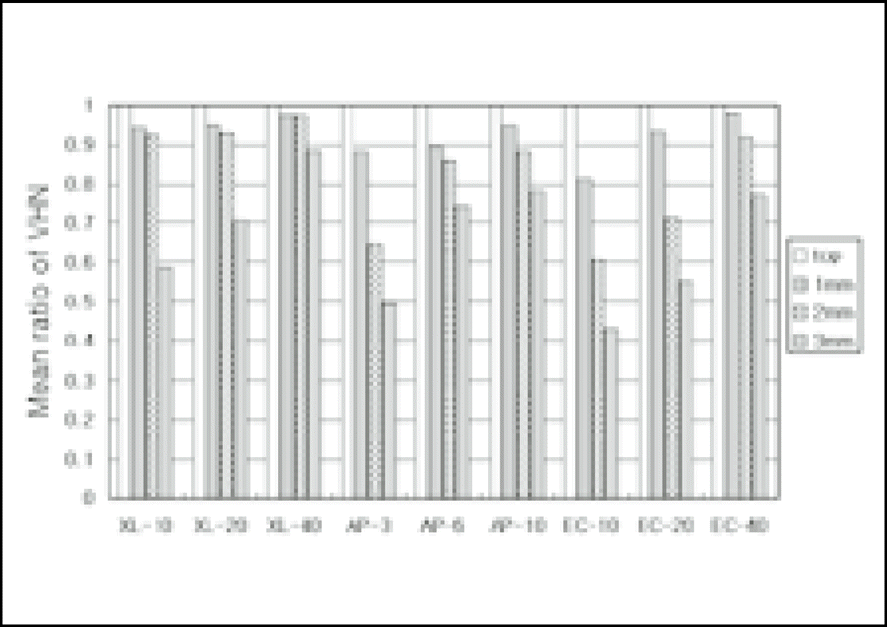
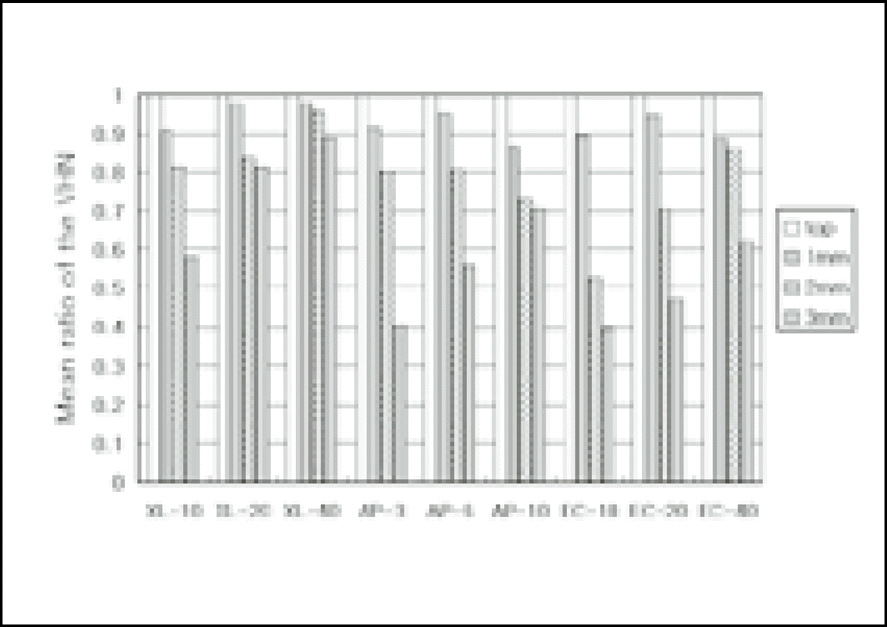
 XML Download
XML Download